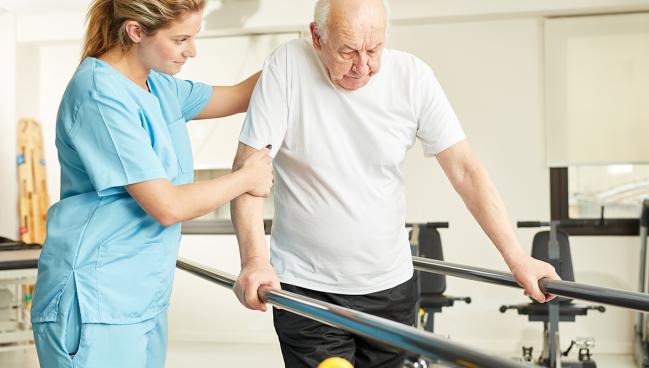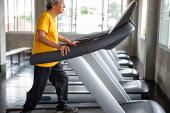Cardiac Rehab Saves Lives After CABG: Too Few Reap the Benefits
Despite a survival advantage at 2 years, only 12% of patients completed the prescribed 36 sessions.

Two years after undergoing CABG surgery, patients who attended cardiac rehab have lower rates of mortality than those who did not, data from a study of Michigan hospitals finds.
“We when we talk to surgeons and clinicians, what helps to reinforce the importance of cardiac rehab for them is to document the benefit,” said Michael P. Thompson, PhD (University of Michigan, Ann Arbor), senior author of the study. “Robust data in isolated CABG patients was something that was lacking in the literature. The benefits we saw are in the ballpark of what we’ve seen in other studies, but to have them [defined] in this population is an important contribution of the study.”
While the greatest survival benefits were seen in patients who completed 36 or more sessions of cardiac rehab, only 12% of patients did so, despite rates of referrals above 90% at most hospitals.
“Particularly in this day and age where we have automatic referrals through the [hospital electronic health record] systems, patients may not even know they received a referral and the surgeons may not know that this patient was referred either,” Thompson said. “Automatic referral is helpful because it takes a step out of the pathway so that you don’t have to go into the system and put a referral in, but I think there's still an awareness that needs to occur for that referral to be acted upon.”
One recommendation from Thompson and colleagues is that hospitals with high rates of cardiac rehab prescriptions resulting in attendance share their best practices with others.
“In the programs that we've talked to that have high rates of participation, many of them have a very strong commitment to getting their patients to cardiac rehab across the board,” he added. “So, the surgeons, the interventionalists, the discharge planners, all of them are reinforcing the message to their patients that this is really helpful [and taking] steps to get their patients enrolled and scheduled for their first visit as early as possible.”
Older Patients Discharged Home More Likely to Attend
In the study, published recently in the Annals of Thoracic Surgery, Thompson and colleagues led by Tyler M. Bauer, MD (University of Michigan, Ann Arbor), used the Michigan Value Collaborative claims registry and Michigan Society of Thoracic and Cardiovascular Surgeons Quality Collaborative to identify 6,412 Medicare patients (mean age 71 years; 29% female) who underwent CABG between 2015 and 2019 at 33 hospitals and were discharged alive. Of those, 60% enrolled in cardiac rehab for a mean of 23.2 sessions, with the total recommended number being 36. The mean time from hospital discharge to initiation of rehab was 54.2 days.
The median hospital-level rate of referral to cardiac rehab was 98%. Rates of use of cardiac rehab varied from 26.8% to 80.5%, with a median of 57.3% of patients attending.
Compared with patients who did not attend cardiac rehab, those who did were older and more likely to have had an elective surgery, more apt to be discharged to home, and less likely to have Society of Thoracic Surgeons major morbidity during their index procedure.
Other factors associated with increased relative odds of attending cardiac rehab included dyslipidemia, increasing hematocrit, greater LVEF, and referral at discharge. Elective procedure status, longer index hospital stay, discharge to an extended care facility, history of cerebrovascular disease or chronic lung disease, increasing creatinine level, prior MI, and being a current smoker all were associated with decreasing odds of cardiac rehab attendance.
Unadjusted 2-year mortality was 3.7% in cardiac rehab users versus 13% in nonusers (P < 0.001). For who attended 11 sessions or fewer, 2-year mortality was 5.2% compared with 2.7% in those who completed all 36 sessions.
In multivariable analysis, there was a 5.5% reduction in 2-year mortality in cardiac rehab users versus nonusers, with inverse probability treatment weighting (IPTW) analysis showing a reduction of 4.8%. A sensitivity analysis also showed unadjusted benefits for users versus nonusers (P < 0.001).
As TCTMD previously reported, the COVID-19 pandemic hit cardiac rehab particularly hard despite efforts to do it remotely, with Thompson noting that it has not quite bounced back to prepandemic levels.
“There may still be a little bit of hesitancy, but for most patients and for most physicians and surgeons, I think they recognize that the benefits of cardiac rehab far outweigh any potential risk that there might be related to COVID and have instituted safety protocols to minimize risk,” he added.
L.A. McKeown is a Senior Medical Journalist for TCTMD, the Section Editor of CV Team Forum, and Senior Medical…
Read Full BioSources
Bauer TM, Yaser JM, Daramola T, et al. Cardiac rehabilitation reduces two-year mortality after coronary artery bypass grafting. Ann Thorac Surg. 2023;Epub ahead of print.
Disclosures
- Bauer reports no relevant conflicts of interest.
- Thompson reports funding support provided by Blue Cross Blue Shield of Michigan





Comments